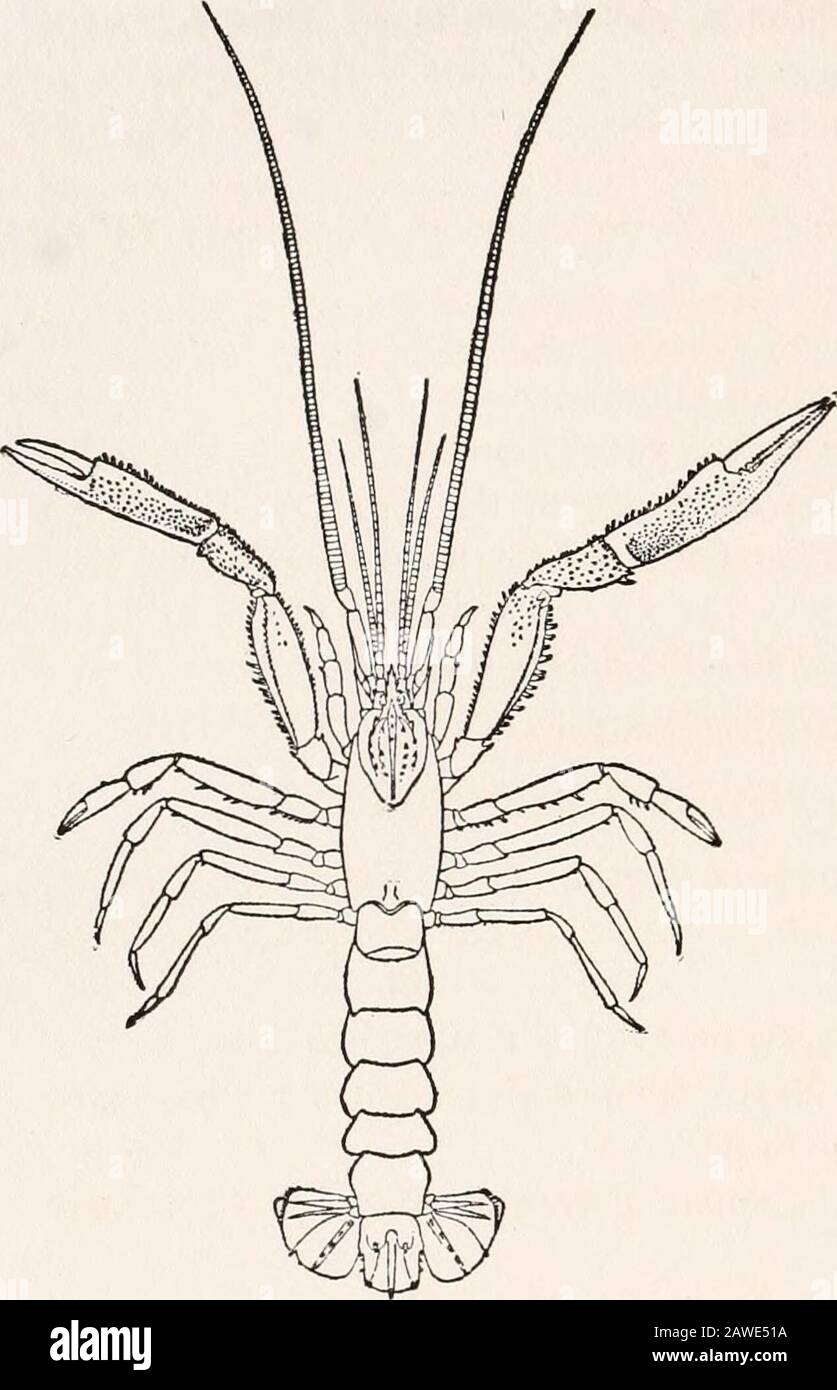Harriman Alaska series . Thestouter cheliped may belonger or shorter than theslenderer one. In the fe-male the chelipeds are twothirds as long as the body.The second pair of feet area little stouter and shorterthan the last three pairs;the first four joints have afew spines on lower mar-gin ; the carpus a few spinestoward the distal end; mar-gins long-setose. Meraljoints of third and fourth pairs of legs with an infero-distal spine; lastthree pairs more or less setose, especially so on the dactylus and distalend of the propodus. Abdomen almost smooth; there are a few setae on the sides and ont

Image details
Contributor:
The Reading Room / Alamy Stock PhotoImage ID:
2AWE51AFile size:
7.1 MB (220.9 KB Compressed download)Releases:
Model - no | Property - noDo I need a release?Dimensions:
1268 x 1969 px | 21.5 x 33.3 cm | 8.5 x 13.1 inches | 150dpiMore information:
This image is a public domain image, which means either that copyright has expired in the image or the copyright holder has waived their copyright. Alamy charges you a fee for access to the high resolution copy of the image.
This image could have imperfections as it’s either historical or reportage.
Harriman Alaska series . Thestouter cheliped may belonger or shorter than theslenderer one. In the fe-male the chelipeds are twothirds as long as the body.The second pair of feet area little stouter and shorterthan the last three pairs;the first four joints have afew spines on lower mar-gin ; the carpus a few spinestoward the distal end; mar-gins long-setose. Meraljoints of third and fourth pairs of legs with an infero-distal spine; lastthree pairs more or less setose, especially so on the dactylus and distalend of the propodus. Abdomen almost smooth; there are a few setae on the sides and onthe swimming-fan. The pleura behind the first, which is subacute andarmed with a spine, are rounded and decrease in length from the secondto the fifth, the anterior margin of the third, fourth, and fifth, and lowermargin of sixth, being armed with a small spine. Telson subquadrangular, broadly rounded behind, a median groove, a few lateral and one medianmarginal spine, 2 larger dorsal spines, Inner branch of caudal swim-. FlG. 91. Calastacus quinyueseriatus. & (X about |).Station 3196. DECAPODS 153 meret with a longitudinal 4- to 6-spined carina and a postero-lateral spine.Outer branch with a transverse row of small spines near the posteriorend, and a few lateral marginal spinules also near the posterior end. Dimensions.—Male, length of carapace and rostrum, measured in themiddle line, 28mm., length of abdomen 41 mm. Distribution.—Southern California, 160-388 fathoms, at the followingstations of the Albatross: Off Point Sur, 298 fathoms, station 3187.Off San Simeon Bay, 160 fathoms, station 3193. Off San Luis Obispo Bay, 252, 200 fathoms, stations 3195, 3196 (type lo-cality). Off Point Conception, 233-284 fathoms, stations 2891, 2892, 3198.Santa Barbara Channel, 205—280 fathoms, stations 2909, 3199—3201.Off Anacapa Island, 388 fathoms, station 2979. Allied to C. fdix Alcock and Anderson, from which it is easily dis-tinguished by the more numerous spines of the carapace, th